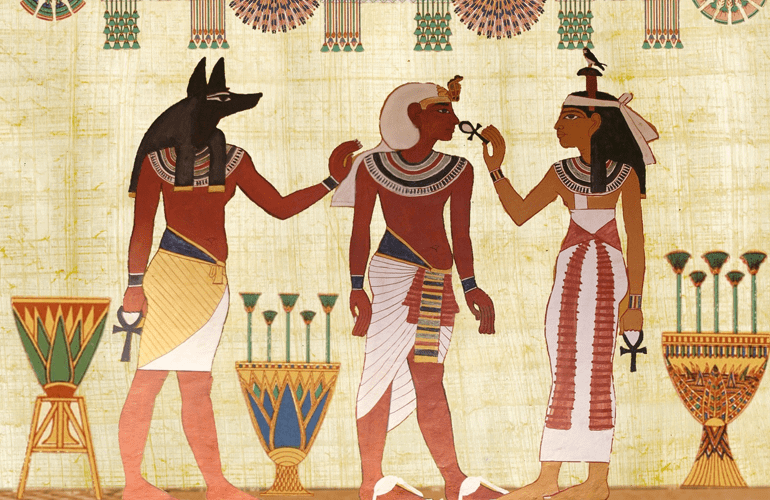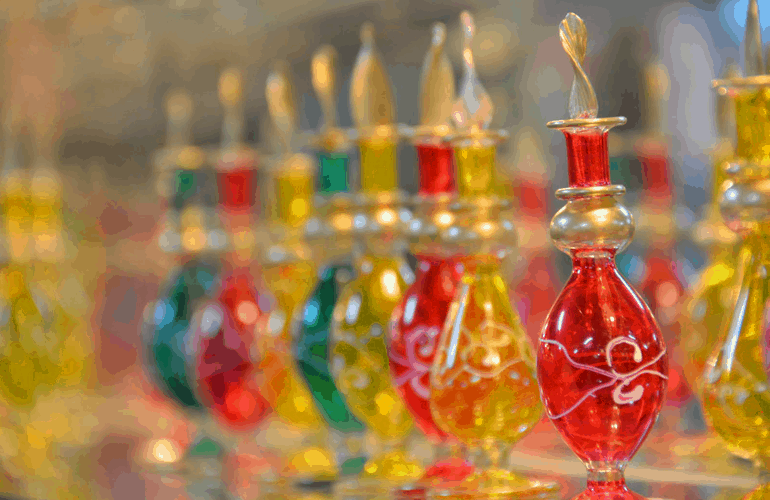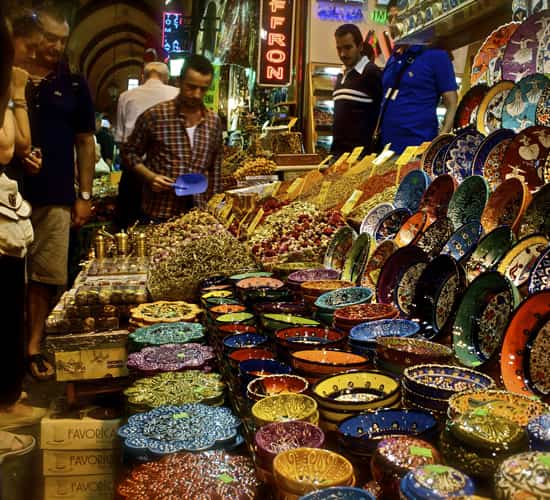Top 17 Egypt Souvenirs:
After your visit to Egypt, you will definitely wish to get some souvenirs. In this topic, we offer you the best souvenirs you can get from Egypt.
This country is a paradise for shopping lovers, and the best place to do it is, without a doubt, in one of its big markets spread around the country, like El-Khalili in Cairo. In them, we will find everything from the classic refrigerator magnet to genuine and typical products of the country, as we will review below.
Something we must take into account when we go shopping in Egypt, is that we have to haggle, and that can be complicated at times, so be patient and willing to get the best prices.
1- Papyrus
The papyrus sold throughout Egypt is actually dried banana leaf, printed with designs copied from ancient Egyptian tomb and temple paintings. It costs only a few Egyptian pounds. Real hand-painted papyrus is sold only at specialist galleries such as Dr. Ragab’s Papyrus Institute in Cairo.


2- Perfume
Egypt produces many of the essences used by international perfumiers. Undiluted essence can be bought by the ounce in Cairo’s Khan al- Khalili souq. Here shops duplicate famous fragrances on request or sell cheap imitations. You can also buy essential oils such as rose or jasmine.


3- Brass and Copperware
The souqs are full of stalls piled high with items made locally, from brass candlesticks and coffee sets to huge wagon wheel-sized copper trays and crescent moons for the tops of minarets. Prices are very cheap, although the quality does vary.
4- Sheesha Pipes
Every Egyptian coffeehouse is filled with men smoking sheesha pipes, the Middle Eastern water pipe. You’ll find them in any souq, but the greatest selection is found in Cairo’s Khan al-Khalili.
5- Egyptian Cotton
Cotton as a crop was introduced into Egypt in the 19th century and almost ever since Egypt has been renowned for the quality of its cotton goods, especially sheets and towels. Much of the best cotton is exported and what you find locally is often inferior. However, certain shops in malls and hotels sell top-quality goods.
6- Jewellery
Egyptians buy large quantities of gold and silver as traditionally many feel it’s safer than putting their money in the banks. Precious metals are sold by the gram in the souqs; with jewelry, a percentage is then added to the price for the workmanship. A favorite Egypt souvenir is a cartouche with hieroglyphs.
7- Carpets and Rugs
Unlike Turkey, Morocco or Iran, Egypt is not a major carpetmaking nation and the work is generally inferior to that in those countries. Rugs and tapestries are woven from coarse wool or camel hair, typically in beige and brown. Colorful picture rugs depicting rural scenes are produced at the Ramses Wissa Wassef Art Centre.
8- Spices
Spices are widely sold in the souqs. They are fresher and of better quality than the packaged variety sold in the West, especially cinnamon, cumin, and dukkah, which is a blend of spices.
9- Pharaonic Memorabilia
The sheer number of kitsch Pharaonic souvenirs is overwhelming: alabaster pyramids, plastic replicas of Tutankhamun’s death mask, Nefertiti dresses and many others. It is possible to find some attractive smallscale reproductions of ancient Egyptian statuary, and the tiny blue-painted scarabs are fun.
10- Inlay Work
Among the most attractive items produced in Egypt are wooden boxes inlaid with slivers of bone, ivory or mother-of-pearl. Hardwood backgammon boards are also often inlaid in this way.
11- Cartouche
One of the most common souvenirs acquired in Egypt are the cartouches, some hanging adornments of gold or silver in which names are sculpted, in general, of between 4 and 6 letters. The engraving is done in hieroglyphics and must be ordered one day in advance.
12- Scarab Beetle
The ancient Egyptians used to have amulets in the shape of beetles, an insect that is very present in filmography related to Egyptian legends, as well as in their iconography. Because beetles had a religious significance in ancient Egypt. They can be found in all sizes, shapes, colors, and materials, and some are also engraved with the hieroglyphic alphabet. Beetle bracelets and necklaces are also very popular in Egypt and can be an excellent souvenir.
13- Egyptian Galabeya
The Galabeya is a traditional dress in Egypt, consisting of a loose weave for men and women. Although you may not find many who wear them in the capital of Cairo, it is possible to locate people in rural areas who still wear them. Jalabeya designs and styles differ in each region of Egypt: some are colorful and others are black with embroidery. Jalabeyas for men are generally more basic, being made of very light or very dark fabrics, with little embellishment.
14- Belly Dancer Costume
Belly dance, of Egyptian origin, is an expressive Arabic dance that includes certain movements and specific music. There are belly dance costumes of different styles and colors, and they are designed with bright and shiny embroidery. They are very common among tourists as souvenirs; however, they are not designed to be worn outdoors.
15- Egyptian Ankh Cross
It’s a mystical cross with a ribbon on top. This amulet represents eternal life, so by giving it away, we are giving the message that we want the other person to have a long life. The beliefs of the Egyptians establish that this amulet helps to prolong life on earth. If you want to buy this magic amulet you will have to go to jewelry stores, markets, shopping malls or souvenir shops.
16- Camel skin products
In Egypt, you can buy various products made of camel skin such as socks, paintings, slippers, blankets, and carpets. Besides being a good souvenir the product has excellent properties.
Any accessory made from original camel wool is sold in the Egyptian markets.
17- Egyptian cats statues
We can see the cat figurines in almost all parts of Egypt, either in shops, bazaars or markets. It is well known that in this country the cat has always been a worshipped animal. It is worth mentioning that this animal is considered a deity in Egypt, therefore it deserves respect.
Cats are also present in the decoration of dishes, vases, and other utensils. They can also be seen in boxes or in jewelry accessories.
Book your Travel Package now to know more about Egypt history

